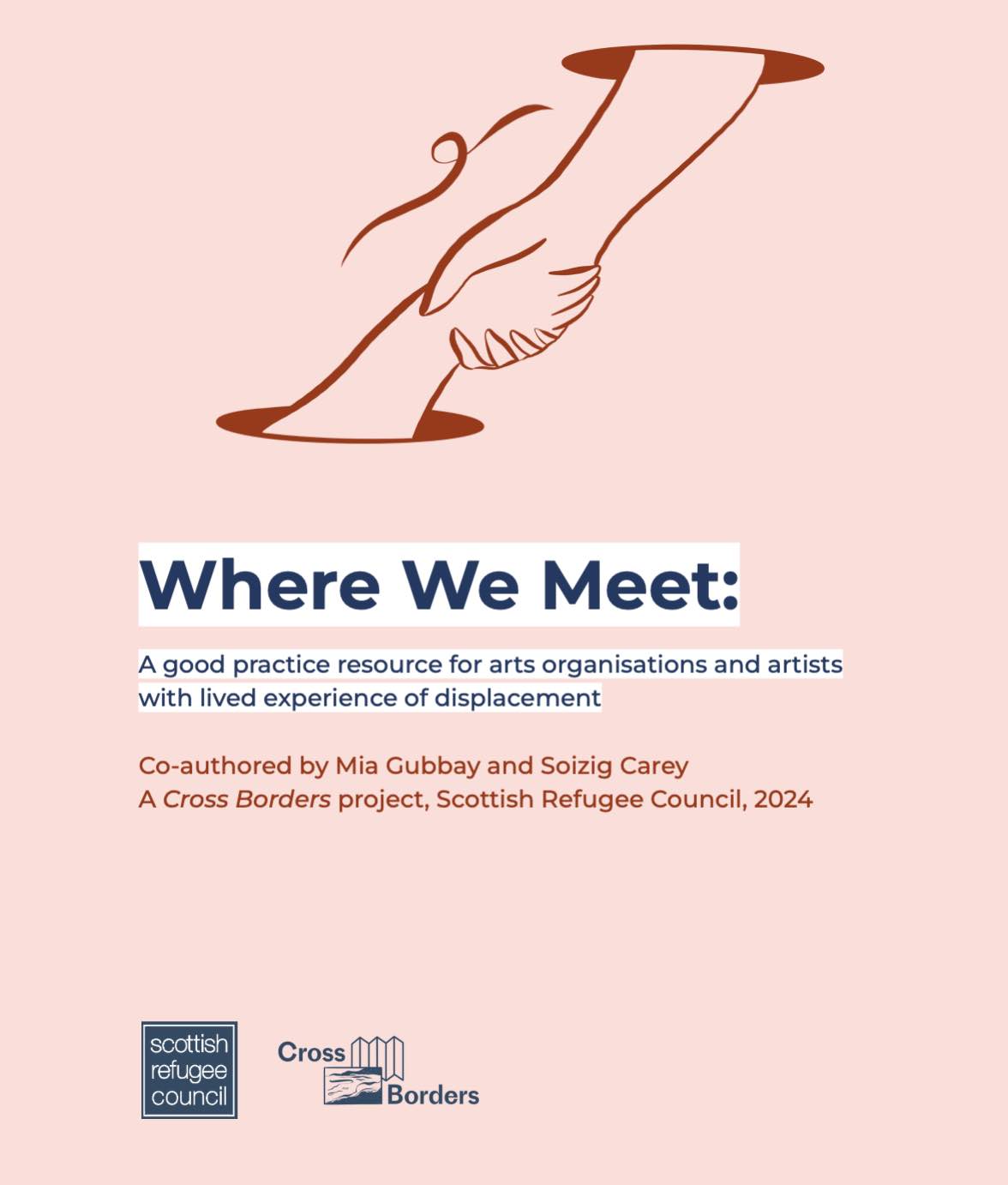Where We Meet: Resource for arts organisations and artists with lived experience of displacement

This new resource is a working document commissioned by Cross Borders, a Scottish Refugee Council project, and it is co-authored by Mia Gubbay and Soizig Carey. It responds to the potential for artists, creative practitioners and arts organisations to co-create inclusive spaces for healing and belonging.
There is an urgent need to co-develop spaces to examine inequalities and perceived social differences – to exchange values, perspectives and forms of knowledge that nurture the imagined alternative realities and futures that can lift us up and guide us through the divisions of modern borders and polarised political systems.
Scottish Refugee Council has a long-standing history of working with artists, activists and creatives from refugee backgrounds. They also work in partnership with arts, culture and heritage organisations, from grassroots groups to larger national institutions.
Artists with lived experience of displacement play a huge role in enriching Scotland’s cultural output. For communities – social activities and creative endeavours build understanding and nurture diversity. For individuals – arts activities can provide a means of communication that overcome language barriers, build skills and confidence, and create opportunities for friendships and shared endeavour.
At the same time, the professional worlds of ‘arts and culture’ in the UK have been shaped by oppressive systems; racist imperialist legacies, class, patriarchy, ableism and processes of commodification. Too often diversity is seen as something ‘out-there’ to be invited in – an objectified unit of difference, rather than something which is essential to human society and wellbeing.
Where We Meet is based on years of work in arts and community development, of coming together, to strengthen creative networks, and to collectively voice and share advice and learning around managing and addressing barriers in arts and cultural industries.
It is hoped this resource can demystify some of the skills, processes and ethical considerations that contribute to modes of good practice within a growing, complex area.
Read the full publication here.
Similar content
06 Mar 2012
By culture360
07 Aug 2024
deadline
30 Aug 2019
posted on
26 Dec 2022
05 Dec 2012
from - to
17 May 2012 - 06 Nov 2012





